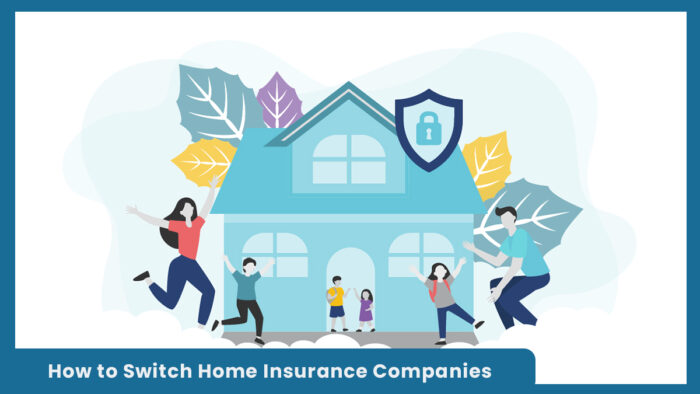How to Switch Home Insurance Companies – Yes, you can change your home insurance company at any time. You don’t have to wait for your current policy to expire. However, switching in the middle of a policy term may come with a cancellation fee from your existing insurer.

People often switch insurers for better pricing, improved customer service, or more flexible coverage options. Whatever your reason, it’s important to make the change carefully to avoid gaps in coverage.
What to Know Before You switch home insurance companies
If you plan to cancel your current policy early, be sure to review the terms. Some companies charge a fee for early cancellation. When setting up your new policy, make sure it begins the same day or just after your old policy ends. A lapse in coverage, even for a short time, could put you at risk and may lead to higher rates later on.
If you’re thinking about switching because you found a cheaper option, it might be worth contacting your current insurer first. They may be able to offer you a better rate or improved coverage. While switching is allowed at any time, waiting until your renewal date could help you avoid extra costs.
How to Switch Home Insurance Companies
Changing your home insurance provider may seem complicated, but it’s actually a simple process when you take the right steps. Here is a clear guide to help you through it:
1. Decide if switching is the right move
There are many reasons people consider switching their home insurance. You may want to bundle your home and auto policies for a discount, find more flexible coverage, or lower your monthly premium.
Before making a decision, compare your current coverage with other offers. A lower price may come with reduced benefits or lower limits. It’s a good idea to speak with a licensed insurance agent to make sure any new policy still meets your needs.
2. Review company ratings and consider your priorities
Before selecting a new provider, look at third-party ratings. For example, J.D. Power offers customer satisfaction scores, while the NAIC tracks complaint levels for each insurer.
Consider what you want in a policy. Do you prefer a local agent, a digital app, or strong customer support? Your needs should guide your choice, not just the cost.
3. Compare your current policy with the new one
Don’t cancel your existing policy until you’ve compared it carefully with the new one. Here are a few areas to focus on:
- Policy limits: Make sure the coverage amount for your home matches its current replacement cost.
- Exclusions: Read through the fine print to check for anything the new policy does not cover.
- Endorsements: These add-ons extend your coverage. Check if you are gaining or losing any options.
- Deductibles: A higher deductible can reduce your premium, but be sure it’s an amount you can manage in an emergency.
- Coverage type: Compare similar types of coverage, such as replacement cost versus actual cash value, for a fair rate comparison.
Working with an insurance agent can help you understand these differences and avoid costly mistakes.
4. Know your current policy’s expiration date
Look at the declarations page of your current policy to find out when coverage ends. This will help you avoid a gap in protection.
If there’s a lapse in coverage, your future premiums could go up. Worse, if damage occurs during the lapse, you’ll be responsible for all repair costs. If you have a mortgage, your lender may step in with their own insurance, which is usually more expensive and limited in coverage.
5. Purchase the new policy
Once you’re satisfied with the quote and coverage from your new insurer, go ahead and buy the policy. Make sure the start date of the new policy matches the end date of your current one.
Most professionals recommend not canceling your old policy until your new one is active. For example, if your current policy ends on July 15, set your new policy to begin on that same date.
6. Cancel your old policy
After the new policy is in place, contact your current insurer to cancel the old one. You may need to submit a cancellation form and provide a specific end date.
If you cancel on the renewal date, there’s usually no refund. If you cancel earlier, and you’ve paid ahead, you may receive a refund based on the unused premium.
7. Inform your mortgage lender
If your home is under a mortgage, notify your lender about the insurance switch. If you pay premiums directly, share your new declarations page with your mortgage provider. This ensures your lender has updated proof of coverage.



